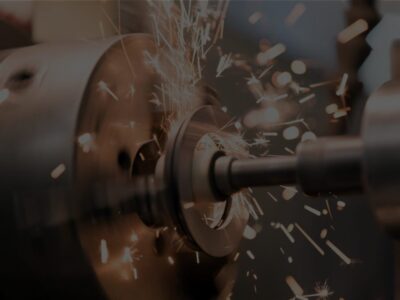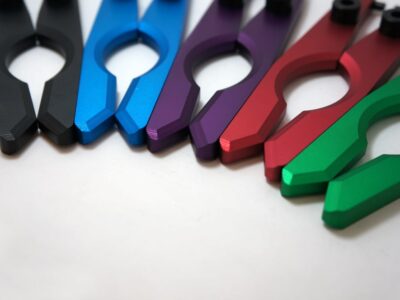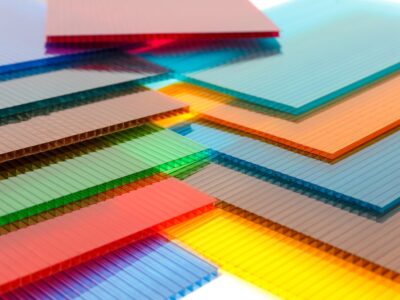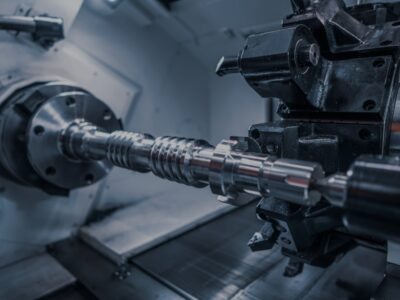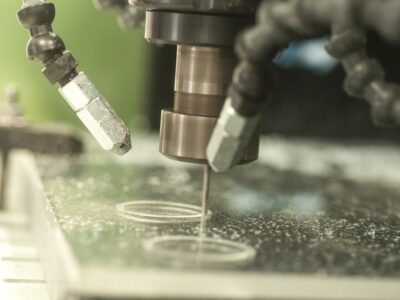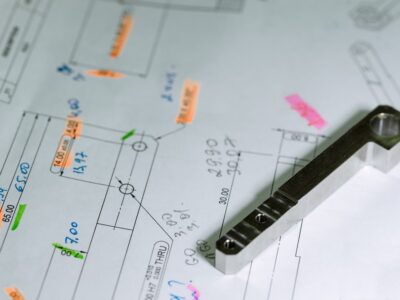Originally published on fastradius.com on March 3, 2020
There’s evidence that machining has been used to make objects as far back as several hundred years B.C., but Computer Numerical Control (CNC) machining as we know it started in the 18th century, when steam was used to automate production processes. In the late 1940s, researchers at MIT developed the first programmable machining systems, using punched paper cards (also called numerical control technology) to direct the machines’ movement. The mid-20th century boom in digital computing revolutionized the manufacturing field, eventually leading to the advanced robotic CNC machines of today.
CNC machining allows manufacturers to make highly accurate parts of consistent quality from nearly any material, including metals, plastics, composites, foam, and even wood. Because CNC machining is highly automated, it offers manufacturers a cost-effective way to execute both custom one-of-a-kind projects and medium-volume production runs.
In this piece, we’ll guide you through the different kinds of CNC machining, as well as which types are best suited for specific parts and applications.
How CNC machining works
Whereas additive processes like 3D printing create parts from scratch, CNC machining is subtractive, meaning that it works in reverse by gradually removing material from a solid block — called a “blank” or a “workpiece” — to make the finished product. CNC machines are directed via digital design files, which are translated into instructions for how the device should cut the workpiece.
Using computers to automate and control the machining process provides an incredible boost to manufacturer productivity. Because multiple CNC machines can use the same design file to make the same series of cuts on multiple uniform workpieces, they can create parts far faster than their human counterparts.
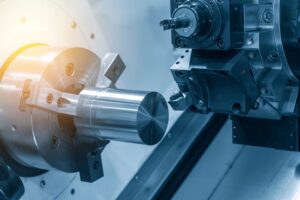
A highly replicable production process, CNC machining has played a fundamental role in the manufacturing sector, and is largely responsible for enabling the genesis of rapid prototyping. Before punched tape and computer numerical control technology existed, parts had to be machined by hand. This invariably created large margins of error in end prototype products, especially when machines were used for large-scale manual manufacturing. CNC machining transformed manufacturing by introducing greater efficiency into the process, enabling rapid prototyping and large-scale production at uniform quality and speed.
Modern CNC machining is a versatile manufacturing process that results in high-precision parts, making it useful for creating a wide variety of products across a range of industries. This includes everything from automotive chassis and plane engines to garden tools and surgical equipment.
Types of CNC machines
There are two types of CNC machines: 3-axis and multi-axis.
3-Axis Machining
3-axis machining includes the processes of CNC milling and CNC turning, both of which involve moving the cutting device along three linear axes as the workpiece is being cut (the three axes being left-to-right, back-and-forth, and up-and-down).
With a CNC milling machine, the workpiece is held stationary as cutting tools or drills rotate at high speed to remove material, resulting in highly accurate parts. The machines are easy to program and operate, and can be used to create most parts featuring simple geometric designs.
However, because the cutting tools and drills can only move along the three axes, certain designs or areas of the workpiece may be difficult to complete or reach. Rotating the workpiece can often be a workaround, but multiple rotations per part in the milling process can quickly increase production costs.
The CNC turning process, on the other hand, involves attaching the workpiece to a rotating spindle and using a lathe to shape the part. Lathes can produce pieces faster and at lower costs than CNC milling machines, especially when used for high-volume production runs, but their primary restriction is that they can only be used to make pieces that are rotationally symmetrical. This includes parts such as screws, bowls, and chair legs.
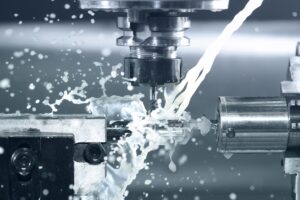
Multi-Axis Machining
The multi-axis CNC machining family includes three processes: indexed 5-axis CNC milling, continuous 5-axis CNC milling, and mill-turning machining with live tooling.
Compared to 3-axis machining, multi-axis processes enable greater freedom of movement during the milling and turning processes. In 3-axis processes, either the workpiece or the cutting tool rotates (but not both), whereas 5-axis processes allows both to rotate and move along the three linear axes. While this opens up opportunities for creating more complex parts, multi-axis machines are more expensive and require specialized machines and operators.
Indexed 5-axis CNC milling is sometimes called 3+2 CNC milling due to the fact that, during the machining process, the cutting tool only moves along the three linear axes while the workpiece has two rotational degrees of freedom. The primary advantage of 5-axis milling is that the workpieces no longer need to be manually repositioned between operations, allowing the creation of pieces with complicated geometries to be created faster and with greater accuracy.
Continuous 5-axis CNC milling machines allow both the cutting tool and the workpiece to rotate and move simultaneously during each operation. This allows manufacturers to create extremely intricate geometries with smooth “organic” surfaces that cannot be replicated with comparable accuracy using other forms of technology. In general, this is the most expensive form of CNC machining per part.
Mill-turning CNC centers combine elements of CNC lathe machines with milling tools. The workpiece is affixed to a spindle that can both rotate like a lathe or hold the workpiece stationary at specific angles (similar to how the 5-axis CNC mill functions). This pairing of high productivity with geometric manufacturing versatility makes this process ideal for creating parts like centrifugal compressors and camshafts that have relatively loose rotational symmetries.
A versatile and cost-effective manufacturing solution
While all CNC machining processes allow manufacturers to create consistently precise parts from a variety of materials, the number of axes of different machines lend themselves to creating certain kinds of parts. For instance, those with simpler designs can be made quickly and affordably using 3-axis systems, while 5-axis machines are well-positioned to create geometrically complex pieces with increased speed and accuracy.
SyBridge is a one-stop digital manufacturing shop, offering best-in-class CNC machining capabilities along with a full-suite of other manufacturing services. Our team of engineers are ready to assist our clients in every phase of the manufacturing process, from design and prototyping to mass production and shipping. If you’re ready to start planning an order — or if you’re just curious about how we work and what we offer — contact us today.

